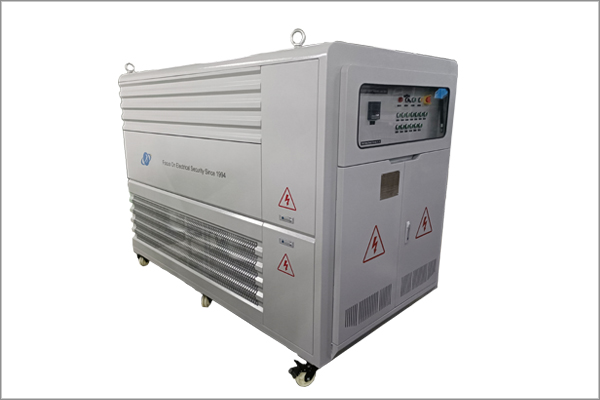Generator resistance load test requirements
Time:2024-06-05
1.Introduction
The generator resistance load test is an important step to ensure that the generator can run stably, safely and efficiently under the rated load. The purpose of this test requirement is to clarify the test objectives, methods, steps and equipment required to ensure the accuracy and reliability of the test results.
2. Test objectives
Verify that the output voltage, frequency and waveform of the generator under rated resistive load meet the specified requirements.
Check the dynamic response and stability of the generator under load changes.
Evaluate the temperature rise and heat dissipation performance of the generator under prolonged operation.
3. Test method
A resistive load bank is used to simulate the rated load of the generator.
The output voltage, frequency and waveform of generator under different load are recorded by measuring instrument.
Gradually increase or decrease the load to observe the dynamic response and stability of the generator.
Monitor the generator's temperature rise and heat dissipation performance during prolonged operation.
4. Test steps
Preparatory work
Verify that the generator is in normal working condition and all parameters are normal.
Prepare test equipment such as resistive load banks, measuring instruments and connecting wires.
Set test parameters, including test time, load range, etc.
Start testing
Connect the resistive load bank to the generator output.
Gradually increase the load, record the output voltage, frequency and waveform of the generator under different loads.
After stable operation at each load point for a period of time, observe and record the dynamic response and stability of the generator.
After reaching the rated load, continue to run for a period of time to monitor the temperature rise and heat dissipation performance of the generator.
End test
Gradually reduce the load until the generator is empty.
Organize test data and analyze test results.
Write test report, record test process, results and conclusions.
5. Test requirements
Test environment
The test environment should meet the requirements of the normal operation of the generator, including temperature, humidity, ventilation and other conditions.
The test site should be kept clean to avoid the influence of debris on the test results.
Test equipment
The resistive load bank should have sufficient capacity and accuracy to simulate the rated load of the generator.
The measuring instrument should have high precision and stability, and can accurately measure the parameters of the generator.
The connecting wire should have good electrical conductivity and insulation properties to ensure the accuracy of the test results.
Test operation
The operator should be familiar with the test methods and procedures and be able to operate the test equipment correctly.
During the test, attention should be paid to safety to avoid the occurrence of dangerous situations such as electric shock and short circuit.
If any abnormal situation is found during the test, it should be stopped in time for inspection, and then continue the test after troubleshooting.
Test result
The test results should be accurate and reliable, and can truly reflect the performance of the generator.
The test report should record the test process, results and conclusions in detail to provide a reference for the use and maintenance of the generator.
Vi. Conclusion
The resistive load test of generator is an important means to ensure the stability and reliability of generator performance. Through this test requirements, the test objectives, methods, steps and required equipment can be defined to ensure the accuracy and reliability of the test results. At the same time, attention should be paid to safe operations during the test, and abnormal situations should be discovered and handled in time to ensure the smooth progress of the test.
News Recommendation
-
 2024-09-11
2024-09-11TRIUMPH LOAD EXHIBITING AT Enlit Europe 2024 -BOOTH 7.H08
-
 2023-04-21
2023-04-21TRIUMPH LOAD EXHIBITING AT DATA CENTER WORLD GERMANY 2023-BOOTH F909
-
 2023-04-06
2023-04-06TRIUMPH LOAD EXHIBITING AT ELECTRIC POWER TECH KOREA 2023 – Booth G109
-
 2022-05-05
2022-05-05What is the role of ac load bank for power supply?
-
 2022-05-05
2022-05-05What is the role of the load bank?


